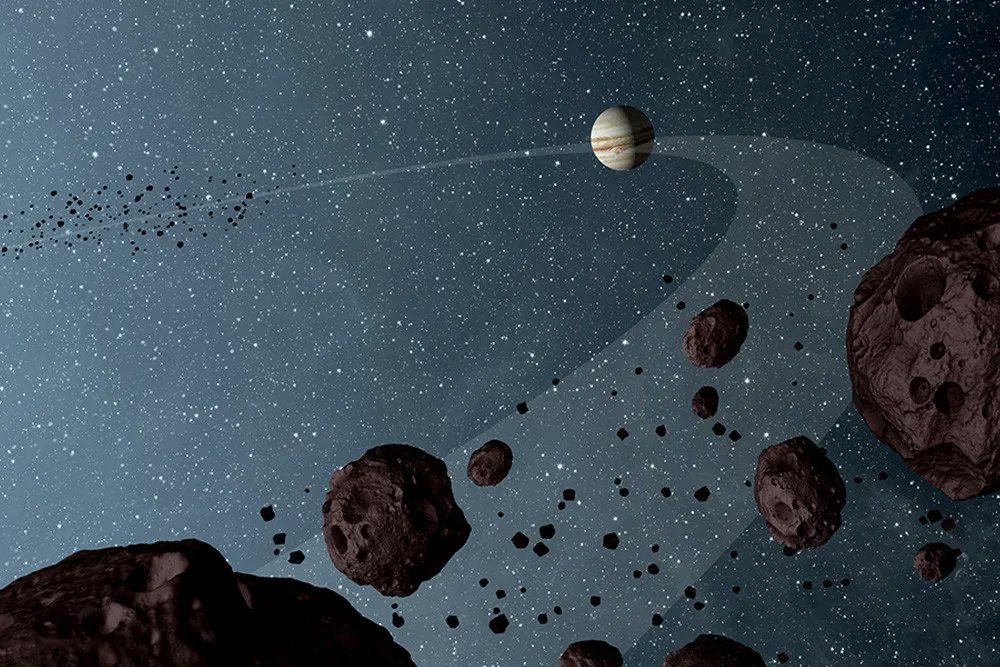
Solar systems evolve, especially early on in their lifetimes. While this evolution is primarily driven by gravity, there are some parts of our own solar system that are difficult to understand – especially how gravity forced them into their current configuration. One of the most prominent of these areas is the Trojan asteroids.
These 10,000 asteroids, which congregate at the L4 (Greek) and L5 (Trojan) points of Jupiter’s orbital path, don’t contain the same amount of asteroids on each side. In fact, despite the fact that collectively the two asteroid groupings are known as the Trojans, the Greeks actually outnumber the Trojans by about 60%.
Typical models of the evolution of the solar system, especially those that are highly reliant on gravity, don’t result in this uneven distribution of asteroids between the two seemingly stable gravitational points. Gravity-based models would imply that each asteroid grouping should have a similar number of asteroids, given that each point is considered to be equally stable. So what caused this uneven distribution?
Lucy, a spacecraft from NASA, will be visiting the Trojan asteroids. Here’s UT’s video on the mission.
Researchers from various institutions in China, America, Abu Dhabi, and Japan think they might have an answer. They found that a very fast migration of Jupiter from the inner solar system to its current orbital path could result in the divergent numbers of asteroids at its stable gravitational points. Given that Jupiter is one of the two lodestars of the Trojan system (the other being the Sun), that seems a plausible scenario.
Partly that is due to some previous theories that are beginning to gain some credence among the scientific community. The Grand Tack Hypothesis, which suggests that Jupiter formed slightly further out than Earth, then came inwards in the solar system and was catapulted (at high speeds) out to its current orbital path, seems to fit the bill nicely for exactly this kind of fast migration. In fact, that fast migration is exactly the kind of event that could potentially cause this uneven distribution, so this research could be thought of as a point toward confirmation of the Grand Tack Hypothesis itself.
In order to prove their own theory, though, the researchers did as all good researchers would do when they lack experimental evidence – they developed a model. This particular model focuses on how Jupiter’s orbit has evolved since its inception and, in particular, what impact that has on the local asteroid population. The findings from the model were in line with the expected values for the population of the Greek and Trojan asteroids.
Asteroids aren’t the only thing that could be located at the Trojan points. We could build settlements at the Earth’s own.
However, there are some downsides to this model. In particular, it doesn’t account for what, if any, other evolutionary aspects of the solar system might have had on the Trojan’s formation. There are plenty of other models that do account for such evolutionary aspects, so maybe someone in the near future will be able to combine the broader solar system models with the Jupiter-specific ones and see what kind of impact it has on the distribution of the asteroids. After all, the more we understand about our early solar system, the better.
Source: Universetoday.com








